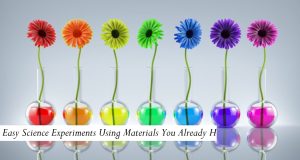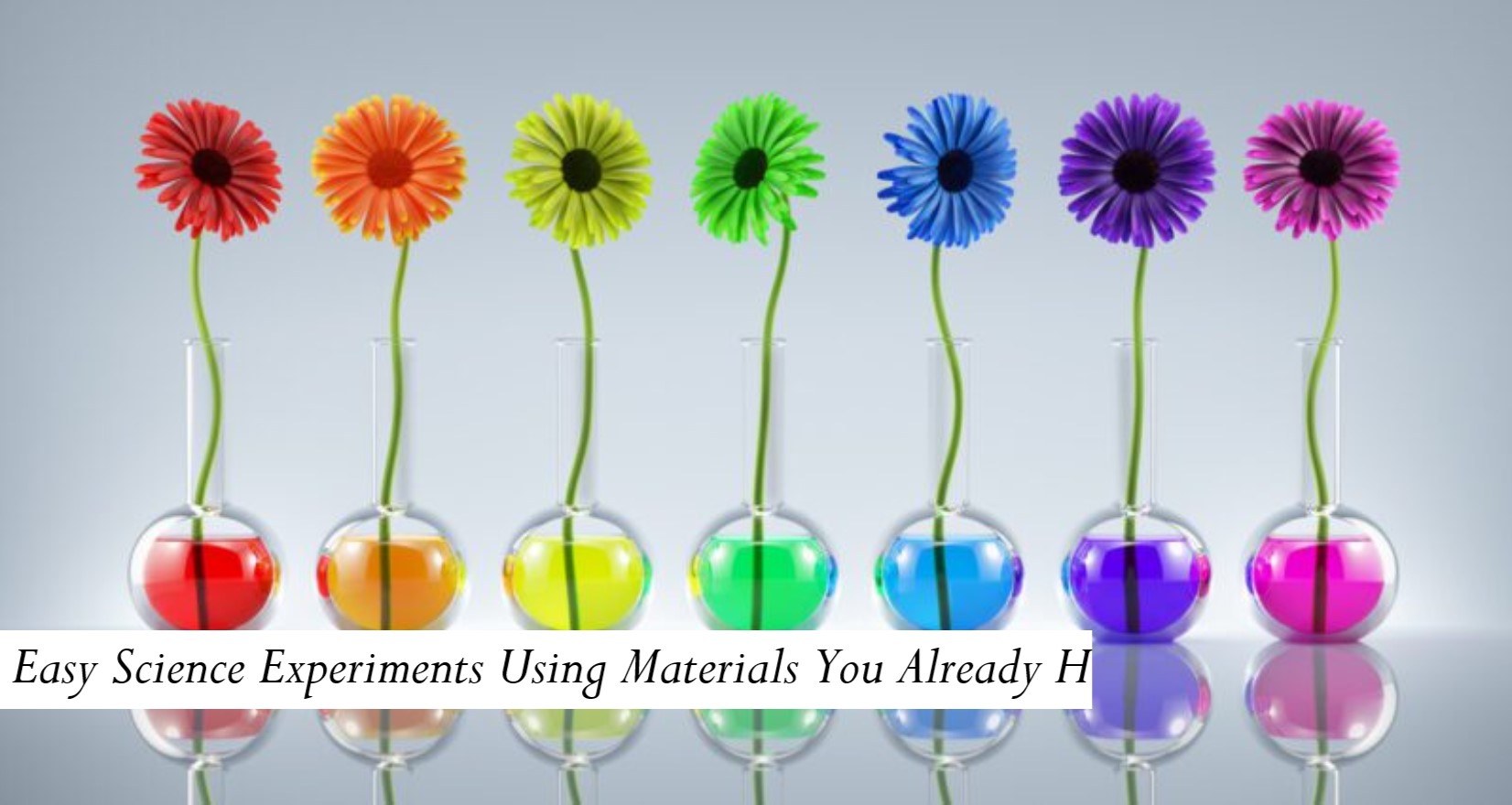
www.jyoungblood.com – If there is one thing that is guaranteed to get your students excited, it’s a good science experiment! While some experiments require expensive lab equipment or dangerous chemicals, there are plenty of cool projects you can do with regular household items.
Regardless of how empty your cabinets may be, we think you are likely to have at least some of these things lying around at home. Watch as your students engineer a bridge, solve environmental issues, explore polymers, or work with static electricity. We’ve rounded up a big collection of easy science experiments that anybody can try, and kids are going to love them!
1. Amplify a smartphone
DIY smartphone amplifier made from paper cups
No Bluetooth speaker? No problem! Put together your own from paper cups and toilet paper tubes.
2. Send a teabag flying
Empty tea bags burning into ashes
Hot air rises, and this experiment can prove it! You’ll want to supervise kids with fire, of course. For more safety, try this one outside!
3. Taste the rainbow
Skittles form a circle around a plate. The colors are bleeding toward the center of the plate. (easy science experiments)
Teach your students about diffusion while creating a beautiful and tasty rainbow! You’ll definitely want to have extra Skittles on hand so your class can enjoy a few as well!
4. Watch the water rise
Two side-by-side shots of an upside-down glass over a candle in a bowl of water, with water pulled up into the glass in the second picture
Learn about Charles’s Law with this simple experiment. As the candle burns, using up oxygen and heating the air in the glass, the water rises as if by magic.
5. Set raisins dancing
Raisins floating in a glass of fizzy water
This is a fun version of the classic baking soda and vinegar experiment, perfect for the younger crowd. The bubbly mixture causes raisins to dance around in the water.
6. Race a balloon-powered car
Car made from cardboard with bottlecap wheels and powered by a blue balloon
Kids will be amazed when they learn they can put together this awesome racer using cardboard and bottle-cap wheels. The balloon-powered “engine” is so much fun too.
7. Crystallize your own rock candy
Colorful rock candy on wood sticks
Crystal science experiments teach kids about supersaturated solutions. This one is easy to do at home, and the results are absolutely delicious!
8. Make elephant-sized toothpaste
children are seen from the shoulders down standing behind three bottles that are overflowing with red, yellow, and green fluid. (easy science experiments)
This fun project uses yeast and a hydrogen peroxide solution to create overflowing “elephant toothpaste.” You can also add an extra fun layer by having the kids create toothpaste wrappers for their plastic bottles.
9. Repel glitter with dish soap
Square dish filled with water and glitter, showing how a drop of dish soap repels the glitter
Everyone knows that glitter is just like germs—it gets everywhere and is so hard to get rid of! Use that to your advantage and show kids how soap fights glitter and germs.
10. Blow the biggest bubbles you can
Girl making an enormous bubble with string and wire (Easy Science Experiments)
Add a few simple ingredients to dish soap solution to create the largest bubbles you’ve ever seen! Kids learn about surface tension as they engineer these bubble-blowing wands.
11. Make neon flowers
Eight daisies are shown in different neon colors. The water in the vases they are in are the same color as the daisies. (easy science experiments)
We love how simple this project is to re-create since all you’ll need are some gerbera daisies, food coloring, glasses, and water. The end result is just so beautiful!
12. Build a Ferris wheel
Miniature Ferris Wheel built out of colorful wood craft sticks
You’ve probably ridden on a Ferris wheel, but can you build one? Stock up on wood craft sticks and find out! Play around with different designs to see which one works best.
13. Learn about capillary action
Glasses of colored water with paper towel strips leading from one to the next
Kids will be amazed as they watch the colored water move from glass to glass, and you’ll love the easy and inexpensive setup. Gather some water, paper towels, and food coloring to teach the scientific magic of capillary action.
14. Demonstrate the “magic” leakproof bag
Plastic bag full of water with pencils stuck through it (Easy Science Experiments)
So simple and so amazing! All you need is a zip-top plastic bag, sharp pencils, and some water to blow your kids’ minds. Once they’re suitably impressed, teach them how the “trick” works by explaining the chemistry of polymers.
15. Design a cell phone stand
Basic cell phone stand made from wood craft sticks, paper clips, and rubber bands (Sixth Grade Science)
Use your engineering skills and items from around the house to design and build a cell phone stand.
16. Give a balloon face a beard
A pink balloon has a face drawn on it. It is hovering over a plate with salt and pepper on it (easy science experiments)
Equally educational and fun, this experiment will teach kids about static electricity using everyday materials. Kids will undoubtedly get a kick out of creating beards on their balloon person!
17. Re-create the water cycle in a bag
Plastic bag of blue water with a sun and clouds drawn on it (Easy Science Experiments)
You can do so many easy science experiments with a simple zip-top bag! Fill one partway with water and set it on a sunny windowsill to see how the water evaporates up and eventually “rains” down.
18. Conduct an egg drop
Egg surrounded by paper straws taped into place
Put all their engineering skills to the test with an egg drop! Challenge kids to build a container from stuff they find around the house that will protect an egg from a long fall (this is especially fun to do from upper-story windows).
19. Engineer a drinking straw roller coaster
Student building a roller coaster of drinking straws for a ping pong ball (Fourth Grade Science)
STEM challenges are always a hit with kids. We love this one, which only requires basic supplies like drinking straws.
20. Use apple slices to learn about oxidation
Several apple slices are shown on a clear plate. There are cards that label what they have been immersed in (including salt water, sugar water, etc.) (easy science experiments)
Have students make predictions about what will happen to apple slices when immersed in different liquids, then put those predictions to the test! Finally, have them record their observations.
21. Build a solar oven
Solar oven built from a pizza box with s’mores inside
Explore the power of the sun when you build your own solar ovens and use them to cook some yummy treats. This experiment takes a little more time and effort, but the results are always impressive. The link below has complete instructions.

